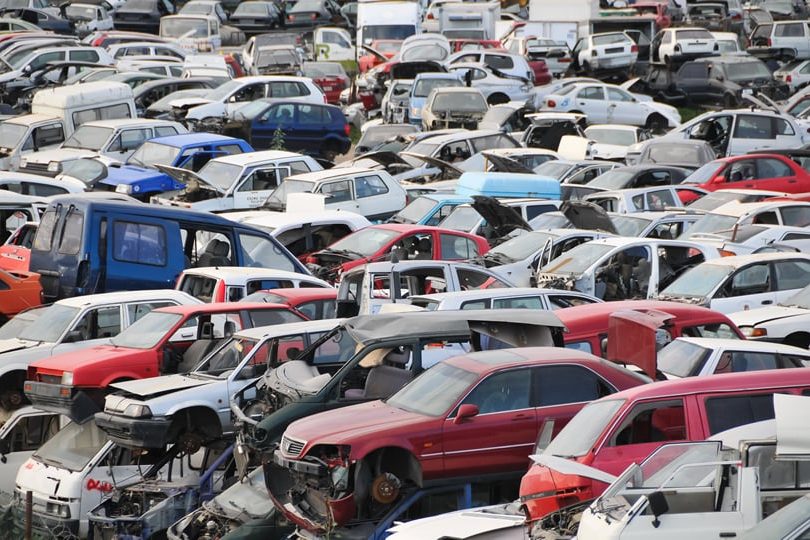Understanding the Basics of Salvage Value
Have you ever wondered what happens to a motor vehicle after it has been declared a total loss? The term “salvage value” often comes into play in such situations. This concept is crucial for car owners, DIY enthusiasts, and auto enthusiasts who want to understand the true worth of a vehicle when it’s no longer roadworthy.

Salvage value represents the estimated resale value of a car that has been deemed a total loss or is beyond economical repair. Understanding this value can help car owners make informed decisions about what to do with their vehicles after an accident or when they reach the end of their useful life. In this blog post, we’ll explore the importance of salvage value, how it’s calculated, and what factors influence it.
Whether you’re a car owner trying to decide whether to repair or sell your damaged vehicle, or an enthusiast curious about the inner workings of the automotive industry, knowing the salvage value of a car can be immensely beneficial. It can affect everything from insurance claims to selling a vehicle for parts.
Motor Vehicle Production: Navigating Trends and Challenges
The production of motor vehicles, including commercial vehicles and light trucks, plays a significant role in shaping the dynamics of salvage value. Automobile manufacturers like General Motors are continually innovating to incorporate new technologies and sustainable practices, which can affect the depreciation expense associated with these vehicles. As vehicle production evolves, the use of raw materials and the strategies for managing depreciation expenses become crucial in determining the residual value and ultimately the salvage value of these vehicles.
Automobile Industry: Current State and Future Outlook
The broader automobile industry is undergoing a transformation, with electric vehicles and autonomous technology leading the charge. These innovations impact salvage value by altering the types of parts that are in demand. For instance, as electric vehicles become more common, the need for components like batteries and specialized sensors increases, potentially raising their salvage value. Additionally, changing consumer preferences and regulatory pressures drive companies to innovate, influencing how salvage value is calculated and perceived in the market.
What Does Salvage Value Mean?
In the automotive world, salvage value refers to the estimated worth of a car that is considered a total loss. This can happen after a major accident or when repair costs exceed the car’s current market value. Insurance companies often calculate salvage value to determine how much they will pay out to the car owner if the vehicle is a total loss. The insurance policy will detail how the estimated salvage value is deducted from the total depreciable amount.
Automotive Industry: Evolution and Current Challenges
The evolution of the automotive industry, marked by globalization and technological advancements, directly impacts how salvage values are assessed. With increasing environmental concerns, manufacturers are shifting towards more sustainable vehicle designs, which can both increase and decrease salvage value depending on the materials and technologies used. As companies innovate to address these challenges, the salvage valuation process becomes more complex, requiring a nuanced understanding of global market trends and consumer demands.
What Does Salvage Value Mean?
In the automotive world, salvage value refers to the estimated worth of a car that is considered a total loss. This can happen after a major accident or when repair costs exceed the car’s current market value. Insurance companies often calculate salvage value to determine how much they will pay out to the car owner if the vehicle is a total loss.
Several factors determine a car’s salvage value. These include the make and model of the vehicle, its age, condition, and market demand for its parts. Other considerations might include the severity of damage, the technology present in the car, and any aftermarket modifications.
Understanding these factors can help car owners anticipate what their vehicle might be worth if it needs to be scrapped. Salvage value is not fixed and can vary depending on the current market conditions.
Factors Influencing Salvage Value
The salvage value of a car is not solely determined by the extent of physical damage it has sustained. Several critical factors play a role in calculating this value, which can significantly impact a car owner’s financial decisions. Firstly, the make and model of a vehicle are crucial. Popular models from manufacturers with a strong presence in the resale market typically garner a higher salvage value due to the demand for their parts.
Secondly, a vehicle’s age and mileage can influence its salvage value. Newer cars with fewer miles are likely to have parts in better condition, making them more appealing to buyers interested in salvaging usable components. Conversely, older vehicles or those with high mileage may have diminished value due to wear and tear on essential parts.
Market demand plays a pivotal role as well. For instance, if there’s a high demand for parts from a specific model, its salvage value might increase as buyers seek to acquire those parts. Moreover, technological advancements and the presence of advanced features or components can either boost or detract from the salvage value depending on how sought after those parts are.
Lastly, external factors such as economic conditions and trends in the scrap metal market can also sway salvage value. A rise in metal prices can theoretically increase the base value for scrap, altering the final valuation of the salvaged vehicle. Understanding these various factors can empower car owners to navigate the intricacies of salvage sales with greater insight.
How to Calculate Salvage Value
Calculating the salvage value of a car involves a few steps. First, it’s essential to determine the car’s market value before the accident or damage occurs. This is typically done using resources like Kelley Blue Book or NADA Guides, which provide current market values based on the make, model, year, and condition of the vehicle.
Once you have the market value, you need to assess the extent of the damage. Salvage value is usually a percentage of the car’s pre-accident value. A standard rule of thumb is to assume salvage value is around 10% to 20% of the car’s market value, but this can vary.
There are various online tools and resources available that can help car owners estimate their vehicle’s salvage value. These calculators take into account the car’s details and provide an approximate value, saving you time and effort.
Why Knowing Salvage Value Matters
Understanding the salvage value of a car can help owners make better decisions regarding insurance claims and vehicle repairs. When a car is a total loss, insurance companies typically offer a payout based on the car’s pre-accident value minus the salvage value. Knowing this can ensure you’re getting a fair deal.
Additionally, salvage value plays a significant role in scenarios where a car is declared a total loss. If the repair costs exceed the car’s value, it may be more practical to accept the insurance payout and sell the vehicle for its salvage value.
Salvage value also impacts the decision to repair or replace a vehicle. By understanding what your car is worth in its damaged state, you can weigh the costs and benefits of repairing it versus selling it for parts.
Maximizing the Salvage Value of Your Car
If you’re looking to maximize the salvage value of your vehicle, there are several strategies you can employ. One option is to remove valuable parts before selling the car as scrap. Parts like the engine, transmission, or even the interior can be sold separately for a higher return.
Additionally, maintaining your car well before it becomes a total loss can preserve its value. Regular maintenance and repairs can prevent severe damage and increase the likelihood of your vehicle having a higher salvage value.
Sustainable practices for decommissioning a car can also influence its salvage value. Recycling parts and materials ethically can add to the overall value and contribute positively to the environment.
Real-Life Examples and Case Studies
To illustrate how salvage value varies, consider a high-end luxury car versus an economy vehicle. A luxury car may have a higher salvage value due to the demand for its parts, while an economy car may have less valuable components.
Factors such as the car’s age, condition, and market demand contribute to differences in salvage values. For instance, a popular model with a high demand for parts will generally have a higher salvage value than a less prevalent vehicle.
These case studies demonstrate that salvage value is not just about the car itself but also about market dynamics and consumer demand.
Emerging Trends in Salvage Value
The concept of salvage value is continually evolving with technological advancements in the automotive industry. Innovations such as electric vehicles (EVs) and autonomous driving technology are reshaping how salvage value is assessed.
For example, the presence of cutting-edge technology in EVs may increase their salvage value due to the high demand for components like batteries and sensors. As these technologies become more widespread, we can expect shifts in how salvage value is determined.
Predictions for the future suggest that as technology continues to advance, the process of assessing and maximizing salvage value will become more streamlined and efficient.
Insurance Company: Navigating the Automotive Industry
Insurance companies are vital players in the automotive industry, significantly influencing salvage value through their claims management processes. They assess salvage value to decide whether a vehicle should be repaired or written off, affecting the financial outcome for both the insurer and the vehicle owner. With the advent of advanced technologies, insurers are now using data analytics and AI to refine their salvage assessments, ensuring more accurate and fair valuations. Their business strategy often involves company estimates of the scrap value and residual value of the vehicles, which can be reflected in the balance sheet.
Role of the Insurance Company in Salvage Value of Cars
Insurance companies play a crucial role in determining the salvage value of a car. Here’s how they are involved:
- Assessment of Damage: After a car is declared a total loss, insurance companies assess the extent of the damage to determine whether the vehicle is repairable or should be written off.
- Calculation of Salvage Value: Insurers calculate the salvage value, which is the estimated resale value of the damaged vehicle. This calculation considers factors like the car’s make, model, age, and the demand for its parts.
- Claims Settlement: The salvage value is deducted from the total payout to the policyholder. This means the insurance company pays the car’s pre-accident value minus the salvage value.
- Disposal of the Vehicle: Once the salvage value is determined, the insurance company may sell the vehicle to salvage yards or auctions, where it can be dismantled for parts or scrap.
- Influence on Repair Decisions: The calculated salvage value can influence whether a car is repaired or written off, impacting the financial decisions of both the insurer and the policyholder.
By managing these processes, insurance companies ensure that the salvage value is accurately assessed and that claims are settled fairly.
Wrapping Up the Importance of Salvage Value
Understanding the salvage value of a car is essential for car owners and enthusiasts. It provides valuable insights into making informed decisions about repairing or selling a damaged vehicle and can significantly impact insurance claims and payouts.
By following the steps outlined in this post, you can calculate the salvage value of your car and make decisions that align with your financial goals and preferences. Remember to consider the factors that influence salvage value and take steps to maximize it when possible. Staying informed about market trends and technological advancements is crucial for enhancing your understanding.
We invite you to share your experiences or insights on salvage value in the comments below. Whether you’re a car owner, DIY enthusiast, or auto enthusiast, your perspective can add value to the ongoing discussion about the importance of salvage value in the automotive industry. Engaging with the community can lead to shared learning and insights, benefiting your long-term vehicle ownership and financial planning strategies.

